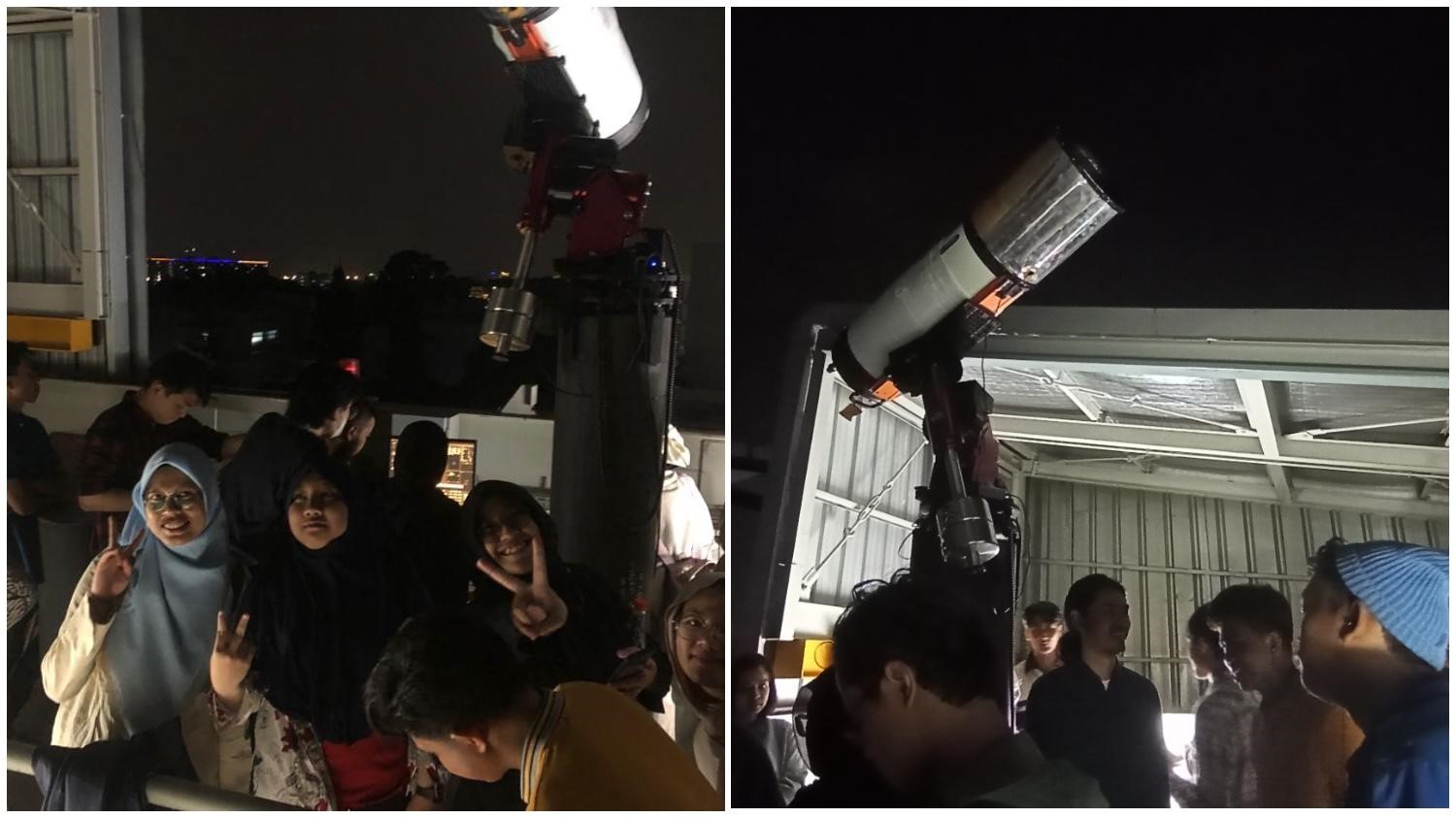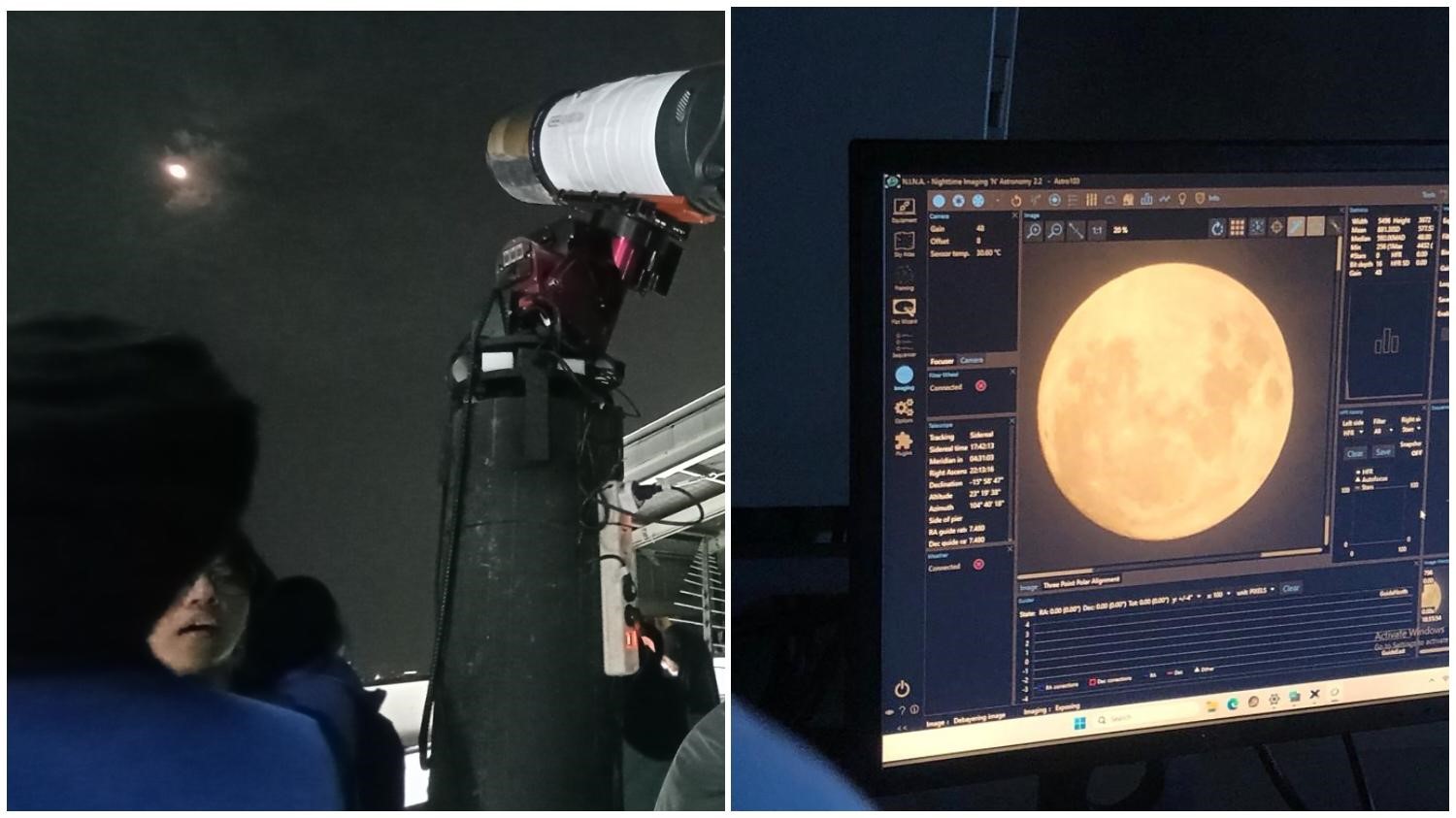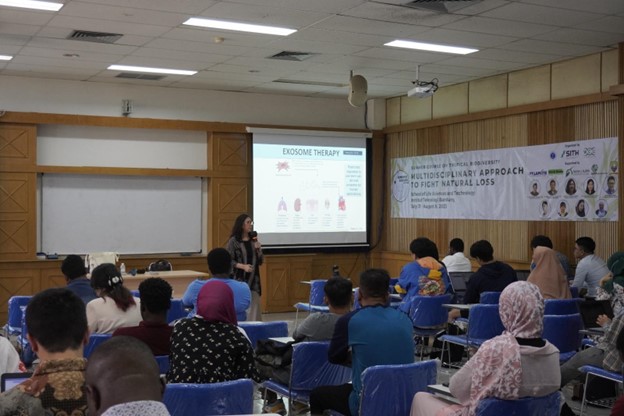Astronomy Students’ Enthusiasm in Observing the 2023 Super Blue Moon Phenomenon
By Anggun Nindita
Editor Anggun Nindita

BANDUNG, itb.ac.id – Astronomy Student Association of ITB (Himastron ITB) organized an observation of the Super Blue Moon phenomenon on Wednesday (30/8/2023) at the Telescope Laboratory, on the 6th floor of the Center for Advanced Studies (CAS) Building, ITB. This event was enthusiastically attended by students of astronomy from various school batches.
A Blue Moon is a phenomenon where there are two full moons in one month of the solar calendar. The second full moon is referred to as the Blue Moon. This occurrence happens approximately every 2.71 years. The term “Blue Moon" does not indicate a change in the moon’s color to blue, rather it is a calendar-related expression. In English, it is commonly associated with the phrase “once in a blue moon,” signifying something that rarely happens.
A Super Blue Moon is a phenomenon when the Blue Moon coincides with the Moon’s Perigee. Perigee is the closest point of the moon to Earth in its elliptical orbit. This proximity causes the moon to appear bigger and brighter compared to when it is in aphelion, the farthest point from Earth.
Himastron ITB, under the Scientific and Social Fields, organized an event to observe the Super Blue Moon. This event had garnered enthusiastic participation from the students of astronomy. Despite being announced just one day before the event, nearly 44 students attended.
Given the rarity of this phenomenon, it is not surprising that the students were highly enthusiastic. Moreover, this event provided an opportunity to test a new telescope of the Astronomy Study Program at ITB.
The head of the Scientific and Social Fields of Himastron ITB, Bayu Septiadi, admitted that he didn’t expect a large turnout considering this event was held quite abruptly.

“At around 7 pm, I suddenly remembered that there would be a Super Blue Moon event tomorrow. From there, I took the initiative to ask for permission from my friend who happened to have the key to the telescope laboratory in the CAS building, and luckily he agreed. By 8 pm, I promptly sent a broadcast message to the group inviting the Himastron members to join in observing the Super Blue Moon” he explained.
The event faced some challenges. Until 7 pm, the sky was covered in thick clouds, obscuring the moonlight. Fortunately, after 7:30 pm, the sky cleared up, allowing for moon observation. This observing event used a RASA (Rowe-Ackermann Schmidt Astrograph) Telescope with a ZWO ASI 183 MC camera.
Following the observation, students of astronomy engaged in a discussion about the Blue Moon phenomenon, covering topics such as what a Blue Moon is, how it occurs, why it is called a Blue Moon. Attendees also captured images of the moon using their smartphones or through the computer’s screen that was connected to the telescope camera.
Given the limited capacity of the telescope laboratory, the students took turns going in and out to fully experience the night sky with the Super Blue Moon. This did not dampen their enthusiasm either. The event then ended around 9 pm WIB.
Reporter: Gishelawati (Astronomy, 2019)
Translator: Sherina Wijaya (Geological Engineering, 2019)
Editor: Hanifa Juliana (Urban and Regional Planning, 2020)

.jpg)
.jpg)
.jpg)
.jpg)
.jpg)

